|
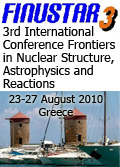
|
 |
|
 |
 |
|
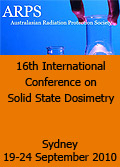
|
 |
|
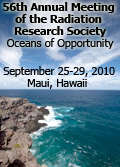
|
 |
|
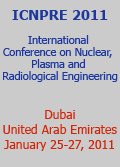
|
 |
|
|
|
|
Si no desea recibir mas este Boletín haga click aqui. |
|
|
|
|
|
|
|
|
|
|
|
|
|
|
|
 |

 |
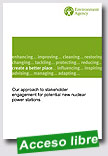 |
Our approach to stakeholder engagement for potential new nuclear power stations
Environment Agency (UK), June 2010, 6 p.
The Environment Agency needs a strategic, proactive and co-ordinated approach to stakeholder engagement for its regulatory role in the development of any new nuclear power stations so as to maximise its effectiveness and efficiency, both for us and for those we are engaging.
The purpose of this document is to: Explain our role in the development of any new nuclear power stations; Set out the
|
commitments we will work to in engaging stakeholders; Provide a framework for stakeholder engagement to make sure that we adopt a transparent and consistent approach for each proposed new nuclear power station development.
Extraído de:
http://www.hse.gov.uk/newreactors/reports/stakeholder-engagement-strategy.pdf
|
 |
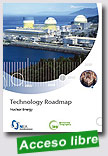 |
Technology Roadmap - Nuclear Energy
International Energy Agency (IEA)/Nuclear Energy Agency (NEA), 16 June 2010, 52 p.
The IEA and the OECD Nuclear Energy Agency (NEA) launched a jointly developed roadmap, the Energy Technology Roadmap on Nuclear Energy. IEA Executive Director Nobuo Tanaka presented the roadmap on the sidelines of the East Asia Climate Forum in Seoul (Republic of Korea). He stated that nuclear power is a mature and low-carbon technology that is ready for rapid expansion; based on IEA analysis, its capacity could more than triple over the next 40 years, making a major contribution to cutting greenhouse gas emissions |
Extraído de:
http://www.iea.org/
|
 |
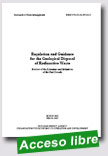 |
Production of Long Lived Parent Radionuclides for Generators: 68Ge, 82Sr, 90Sr and 188W
IAEA Radioisotopes and Radiopharmaceuticals Series, 2020, 116 p.
A review of the literature and initiatives of the past decade.
This publication is also available in French as: Réglementation et lignes directrices pour l'évacuation des déchets radioactifs en formation géologique - Revue de la littérature et des initiatives de la dernière décennie - http://www.nea.fr/pub/ret.cgi?id=6406
|
Extraído de:
http://www.nea.fr/pub/ret.cgi?id=new#6405
|
 |
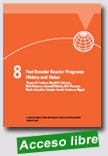 |
|
partners. In all of these programs, the main driver was the hope of solving the long term energy supply problem using the large scale deployment of nuclear energy for electric power. Plutonium-fueled breeder reactors appeared to offer a way to avoid a potential shortage of the low-cost uranium required to support such an ambitious vision using other kinds of reactors.
Uranium proved to be much more abundant than originally imagined and, after a fast start, nuclear power growth slowed dramatically in the late 1980s and global nuclear capacity is today about one-tenth the level that had been projected in the early 1970s. The urgency of deploying fast neutron reactors for plutonium breeding therefore abated — at least in the western Organization for Economic Cooperation and Development (OECD) countries. In India and Russia, however, concerns about potential near term uranium shortages persist, and
new demonstration breeder reactors are being built. China, which currently is building up its nuclear capacity at an enormous rate, is considering the possibility of building two Russian designed breeder reactors. Because of the high costs and reliability and safety issues that are detailed below, however, no commercial breeder reactors have been deployed.
Extraído de:
http://www.fissilematerials.org/ipfm/site_down/rr08.pdf
|
 |
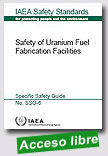 |
Safety of Uranium Fuel Fabrication Facilities - Specific Safety Guide
IAEA Safety Standards Series, 2010, 62 p.
This Safety Guide supplements the Safety Requirements publication Safety of Fuel Cycle Facilities, and addresses all the stages in the life cycle of uranium fuel fabrication facilities (UFFFs), with emphasis being placed on design and operation. It describes the actions, conditions and procedures for meeting safety requirements and deals specifically with the handling, processing and storage of low enriched uranium that has a
|
235U concentration of no more than 6%, derived from natural, highly enriched or reprocessed uranium. The publication is intended to be of use to designers, operating organizations and regulators to ensure the safety of UFFFs.
Extraído de:
http://www-pub.iaea.org/MTCD/publications/PubDetails.asp?pubId=810
|
 |
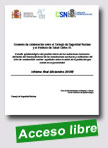 |
Posible impacto radiológico de las instalaciones nucleares y radiactivas del ciclo sobre la salud de las personas
Consejo de Seguridad Nuclear, Diciembre 2009, 218 p.
El estudio epidemiológico realizado en los entornos de las instalaciones nucleares y radiactivas del ciclo de combustible nuclear españolas ha analizado la mortalidad por cáncer y su posible relación con las dosis efectivas estimadas en la población, derivadas del funcionamiento de las instalaciones. También se ha estudiado la posible influencia de las dosis debidas a radiaciones de origen natural.
Resumen ejecutivo | Informe resumen | Informe final
|
Extraído de:
http://www.csn.es/index.php?option=com_content&view=
category&layout=blog&id=141&Itemid=6&lang=es
|
 |
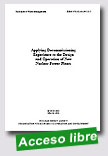
|
Applying Decommissioning Experience to the Design and Operation of New Nuclear Power Plants
Nuclear Energy Agency (NEA), 21 April 2010, 56 p.
Experience from decommissioning projects suggests that the decommissioning of nuclear power plants could be made easier if it received greater consideration at the design stage and during the operation of the plants. Better forward planning for decommissioning results in lower worker doses and reduced costs. When appropriate design measures are not taken at an early stage, their introduction later in the project becomes increasingly difficult. Hence, their early consideration may lead to smoother and more effective decommissioning.
|
It is now common practice to provide a preliminary decommissioning plan as part of the application for a licence to operate a nuclear facility. This means, in turn, that decommissioning issues are being considered during the design process. Although many design provisions aiming at improved operation and maintenance will be beneficial for decommissioning as well, designers also need to consider issues that are specific to decommissioning, such as developing sequential dismantling sequences and providing adequate egress routes. These issues and more are discussed in this report
Extraído de:
http://www.nea.fr/pub/ret.cgi?id=new#6924 |
 |
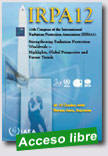 |
12th Congress of the International Radiation Protection Association (IRPA12): Strengthening Radiation Protection Worldwide — Highlights, Global Perspective and Future Trends
IAEA Proceedings Series, 2010, 334 p.
This publication represents the official record of the 12th International Congress of the International Radiation Protection Association (IRPA), held in Buenos Aires, Argentina, from 19 to 24 October 2008. These international congresses are organized locally by IRPA Associate Societies, and this 12th congress was organized by the Argentine Radiation Protection Society (SAR) in
|
cooperation with the International Atomic Energy Agency (IAEA), the World Health Organization (WHO) and the Pan American Health Organization (PAHO).
The protection of people and the environment from the harmful effects of ionizing and non-ionizing radiation, while permitting the development and use of radioactive materials and radiation producing devices and technologies for the benefit of society, is a crucial international endeavour. Radiation is present everywhere in the natural environment and there are some industrial activities that lead to increased exposure to these natural sources. The use of radioactive material and radiation producing devices is on the rise in medical diagnostic and
therapy procedures. These procedures generally benefit the patients involved, but also present risks to both the patient and medical personnel involved in the procedures. Plans to increase the development of nuclear power will require strong radiation protection programmes in mining, processing, transportation, and the use and disposal of nuclear and radioactive material. Radiation protection faces additional challenges with security screening, responses to potential acts and emergencies involving the release of radioactive material, and other
industrial and research activities
Extraído de:
http://www-pub.iaea.org/MTCD/publications/PDF/Pub1460_web.pdf
|
 |
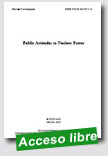 |
Public Attitudes to Nuclear Power
Nuclear Energy Agency (NEA), 22 March 2010, 56 p.
Public attitudes to nuclear power are critical in shaping nuclear policies in OECD/NEA countries and the latter will only be able to make use of this energy source if a well-informed public considers that its benefits outweigh its risks. This report provides a number of insights into public attitudes towards nuclear power. Support for nuclear energy is generally correlated with the level of experience of and knowledge about nuclear power. Interestingly, while the public is generally aware of the contribution of nuclear power to ensuring security of energy
|
supply, its potential contribution to combating climate change is less well recognised. Solving the waste disposal issue would also significantly increase the level of public support. Furthermore, OECD/NEA governments may wish to reflect carefully on how to react to these results as, according to the surveys, they are the least trusted source on energy issues, far behind regulators, non-governmental organisations and scientists.
This publication is also available in French as: L'opinion publique et l'énergie nucléaire - http://www.nea.fr/pub/ret.cgi?id=6860
Extraído de:
http://www.nea.fr/pub/ret.cgi?id=new#6859
|
 |
|
|
|
|
|
|
|
|
| |
|
|
|
|
|
|
